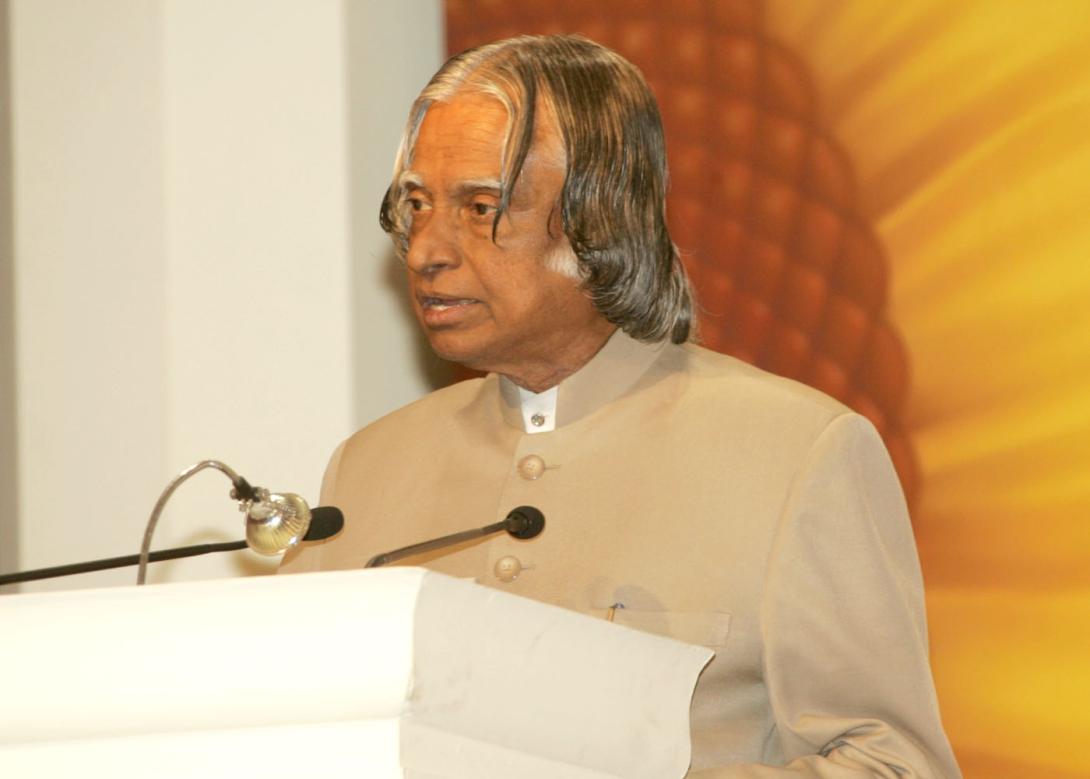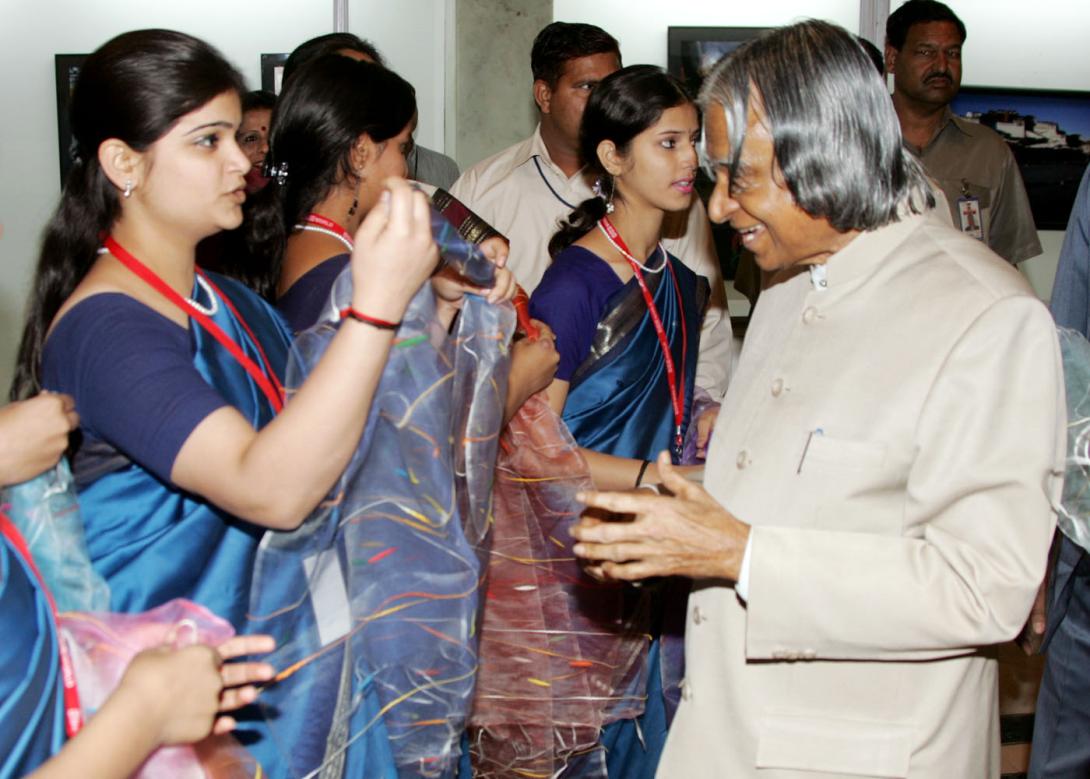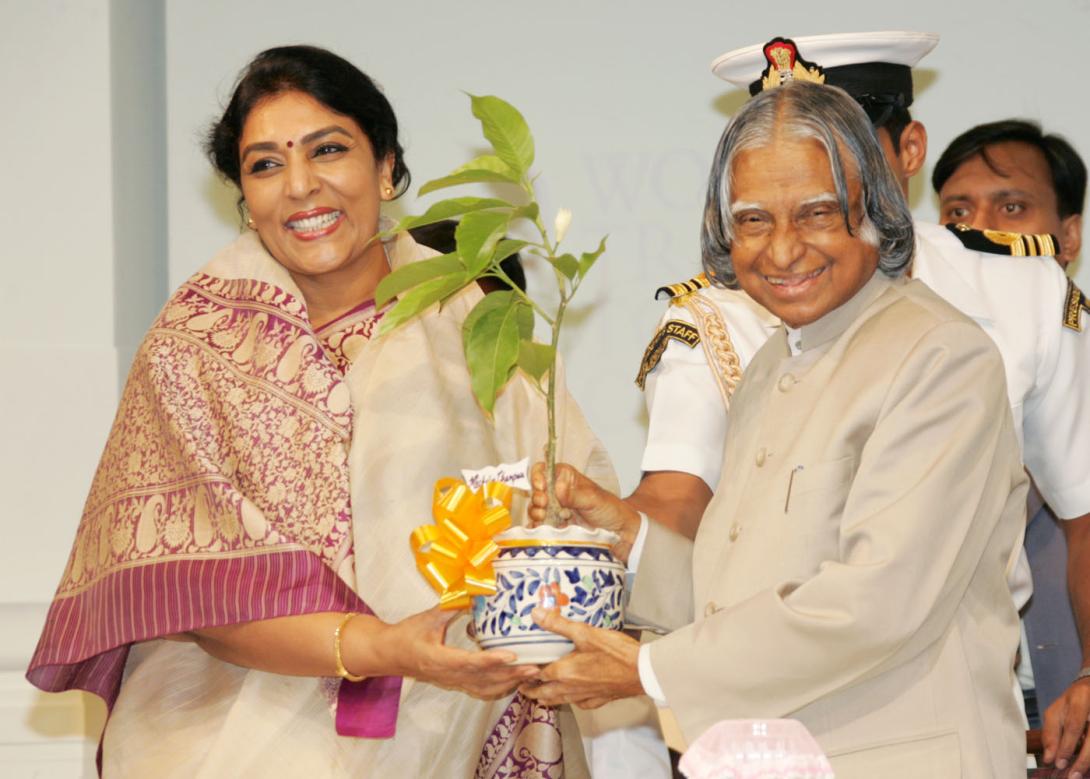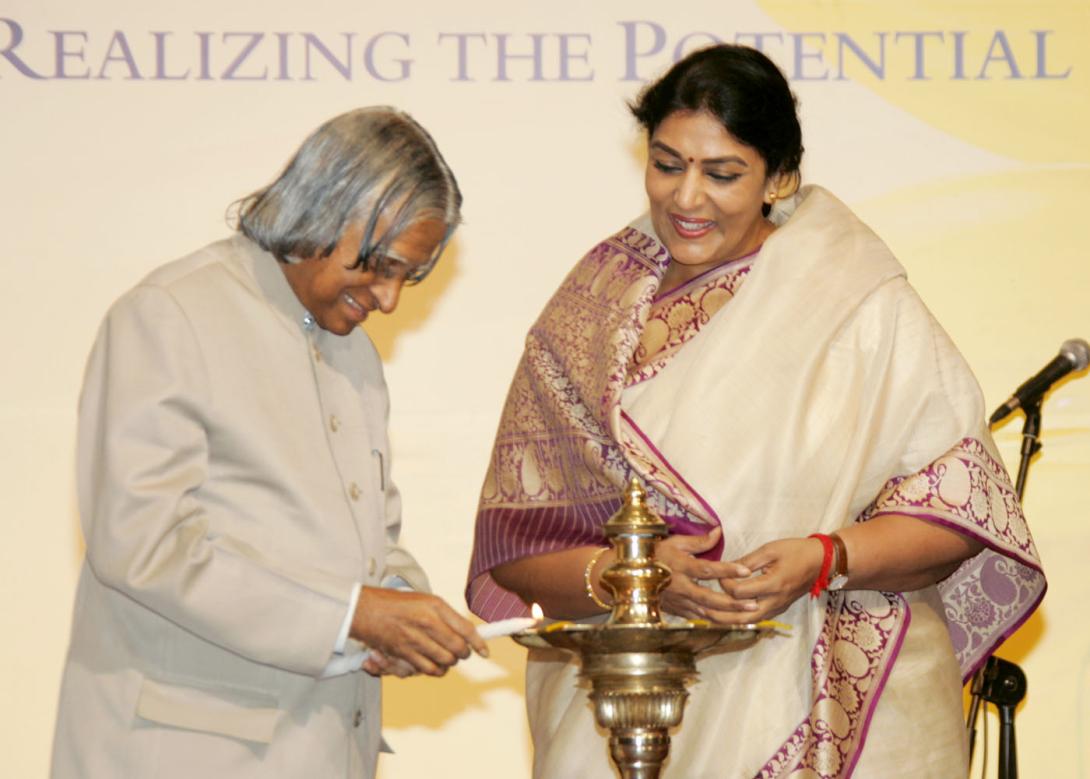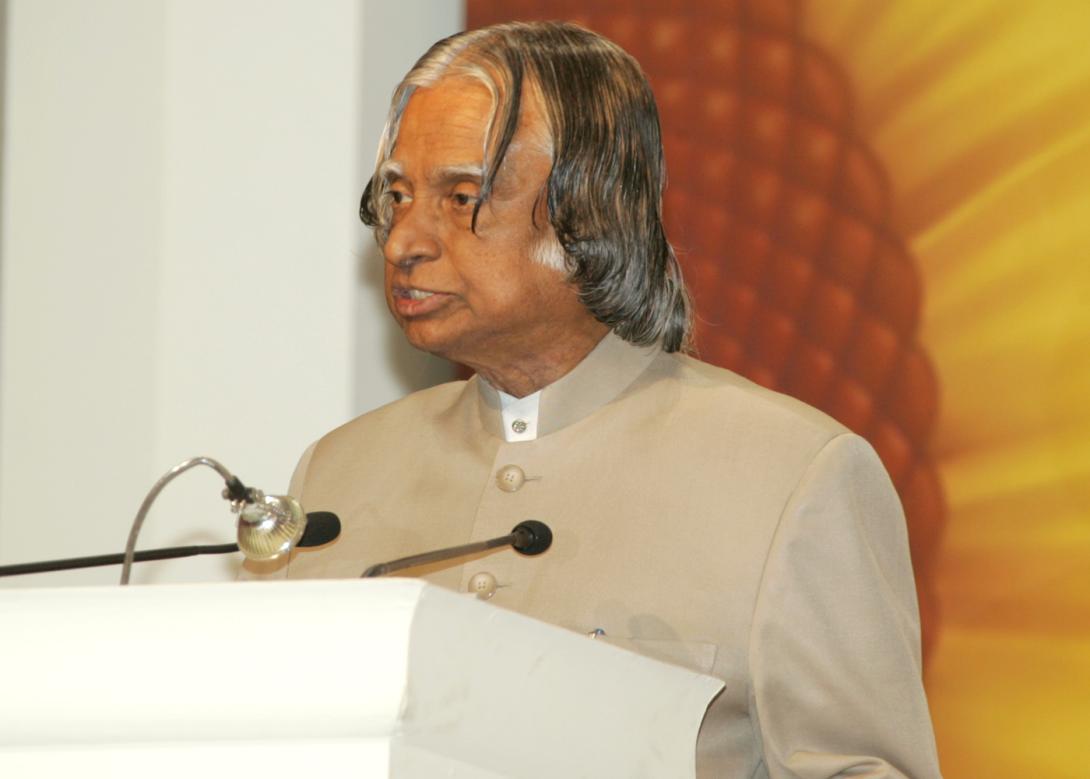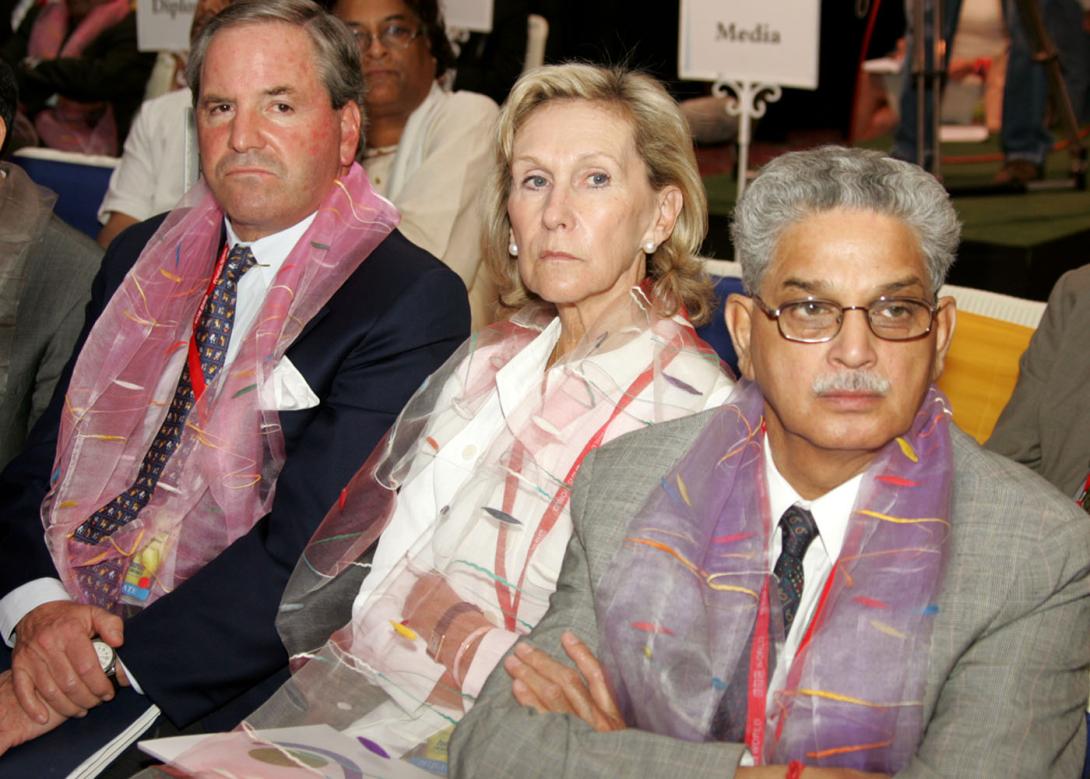Address at the Inauguration of the Fifth Global Travel and Tourism Summit
New Delhi : 08-04-2005
Dynamics of Travel and Tourism
I am happy to participate in the inauguration of Fifth Global Travel and Tourism Summit organized by the World Travel and Tourism Council (WTTC) in partnership with the Ministry of Tourism. I am delighted to deliver the inaugural address. My greetings to the organizers, government functionaries, delegates from member countries, tourist operators, infrastructure developers other participants and distinguished guests. I would like to discuss on the topic "Dynamics of Travel and Tourism"
Discovering India
The spirit of ?Discovering India? is indeed motivated by many kingdoms in the past. That is how Chinese traveler Hiuen Tsang during 630-645 AD visited India and saw the glory of Nalanda University teaching at that time and stayed there for doing research in theology, philosophy and religion. The traveler was first a student and later became a teacher. His 12 years travel in India has been highlighted in the book form giving the political, social and education system of the country at that time. In 1017 AD another important traveler from Persia Alberuni, traveled many parts of India and recorded many aspects of Indian civilization with his analysis and comments. As you all know, the mission of Columbus for ?discovering India? in year 1492 ended in discovering another continent America. Something happened and an American tourist Thomas L Friedman after 512 years of the voyage of Columbus flies to India and finds in the Information Technology capital Bangalore the ?crown jewel? of Indian outsourcing and software industry. It can be seen that discovering India is a continuous process even in 21 century. That is how all of you from many parts of the planet have assembled in this hall of Ashoka Hotel today. My greetings to all of you, for this successful mission of discovering India.
A dynamic civilization
The present day tourism, if we take in India with the billion people, with the vast civilizational heritage of the country, from the Himalayas to Kanyakumari, J&K, Central India, North Eastern states, Bihar, Western States, the large coastal line, Andaman Nicobar and Lakshadweep Islands have a lot to attract the tourists. It has sea coast in three sides, it has islands, it has snow covered hill region, it has desert and it has thick forest regions. All of them are of natural evolution. Many centuries old monuments, temples, churches and mosques are spread throughout the country. You will find in many parts of the country all three situated adjacent to each other. It is a treat to watch such type of unity. India has one of the Seven Wonders of the World, Taj Mahal. Any tourist can see the continuity of the only enriched civilization of billion people of the largest democracy with multiple religions, multiple languages and multiple cultures.
Types of Tourism
India, like many other countries has had a long tradition of religious and spiritual tourism. Our ancestors traveled to the different corners of the sub-continent, sometimes on foot, to visit places of pilgrimage. While the main objective of the pilgrim was to attain communion with the nature, the route always had an element of adventure and of the unexpected. The journey also brought the traveler face to face with the marvels provided by Mother Nature whether in the form of The Himalayas, the deep jungles or the deep blue of the Indian Ocean. This, to my mind, was an ideal tourist package - low in cost but high on experience and adventure-in effect, it gives shape to the tourist?s dream. Today there are many types of tourism in vogue. Some of the prominent tourist products are spiritual tourism, ecological tourism, religious tourism, health tourism, festival tourism and cultural tourism. Also the nation attracts researchers, students and teachers to study India?s pattern of living and the economic and cultural integrity of the last half a century after independence.
Two experiences
Last year when I was in Dubai, I met the Ruler of Dubai. He said that Dubai is planning to increase the tourist arrival by five times. Once this decision was taken, I found, that the aviation minister was planning for a new airport and also new types of aircraft needed for attracting the tourists. The surface transport minister was planning a number of additional road lanes required in the highways. The works ministry was planning for increase in the hotel accommodation for accommodating the tourists without disappointment. The health ministry had a road map for waste management and a plan for providing the additional clean water needed. This was the type of integrated response that I found in the whole government to fulfill the national objective. We have to take the message coming out of this experience and plan for the multiple requirements simultaneously for promoting tourism in our country. Last week the President of Maldives was visiting India and I had a discussion with him particularly on Maldives tourism. The tourism in Maldives accounts for over 19% of their GDP, a fifth of total employment, approximately 30% of revenues and 70% of foreign exchange earnings. Tourism, the dominant sector of the country?s economy, is very dependent on choices made by external consumers. The Maldives attracts tourists with its beautiful island resorts in the form of aesthetically crafted thatched cottages and bungalows.
In 2004, Maldives had attracted tourists, twice its population. On analysis, I found the reasons for the growth as, that the Government of Maldives gives the Islands for development as tourists spot on lease to private enterprises. The private enterprises invest and develop the whole Island with self-contained resorts including roads, power system, communication, drainage and waste management system, water, shopping malls, entertainment areas and banking system. There is no Government investment needed for the project.
The Indian tourism Organisation can study this model and evolve island tourism in Lakshadweep and Andaman & Nicobar. In Lakshadweep, we can also provide hinterland tourist package due to its nearness to Kerala. This will be an additional promotional proposition for our tourism industry. The successful tourism needs quality infrastructure. As in the case of Maldives, there is a need to find special methods by which the tourist infrastructure can be created and maintained at an optimal level of performance. Now I would like to discuss the infrastructural needs of our tourism sector.
Infrastructure Development
When the tourists come to any country, they would like to realize maximum value for the duration of his stay which can come only through reliable and fast travel conditions. Many of our tourist spots need travel by many modes. To enable fast travel what we need is frequent air connectivity to majority of the tourist centres apart from what we have for connecting small and big cities. Complimentary to the air travel we can also plan fast train services like Shatabdi express. Creation of these facilities will involve infrastructural development such as airports, railway line and multi lane roads to interior India. The physical connectivity, electronic connectivity and knowledge connectivity of the tourist spots can be linked with the PURA (Providing Urban Amenities in Rural Areas) programme of the cluster of villages in that regions. This will provide the economic connectivity through tourist arrivals. In addition to this, we can also think in terms of inland waterways which can attract certain class of people. This mission has to be accomplished through government- private partnership.
Quality Accommodation
Another important infrastructural need is quality clean accommodation. Private/public sector participation should plan adequate number of hotel rooms with various amenities at different tourist centers. The accommodation apart from being central in location should also provide a good environment to attract the tourists. Communication facilities in the accommodation should be such that the guests should feel that he is in touch with the outside world. This helps them to sent messages to any part of the world any time. Recently, during my visit to South Africa, I found that each room had a e-connectivity through which the Hotel was in touch with the guests. The guests can also send messages to any part of the world. Also the hotel must be able to provide all the information needed by the guests to plan his visits within his prescribed budget and also available time. In addition, the hotel authorities must ensure safety and security of the guests including their belongings. It is also essential to provide the type of food which the tourists normally prefer in their country including the variety which is special in the area of their visit.
Training the tourist operators
To understand the core competence of the country, a unique schooling with scholars who knew, who have studied, who have done the research on all our tourists assets, should be assembled and they should teach various categories of tourist managers, workers and grass root level tourist operators. Above all an encyclopedia of Indian tourism should get evolved within the next 3 years time. This should become the training manual for the tourism personnel and also enable the provision of tourist guide to the visitors. This should provide adequate knowledge to the people, regarding places their cultural heritage, religious importance and the bio-diversity of the whole nation. The document should enable the visitors to make an appropriate choice based on their interest.
Commercial utilisation versus environment protection
There is a vast imbalance across countries in the number of tourists which they receive. There are some countries, like Maldives, which receive more tourists in a year than their total population. At the other end of this spectrum are countries, which hardly have any tourists who come for visiting. Some attention must be given to identify the reasons for the poor performance of this sector in such countries. At the same time, it should be ensured that the natural potential and heritage should not be over used. The case of mountain trails in the Himalayas comes to my mind. Some years ago, it was seen that the incoming trekkers would bring in large amounts of disposable packages and litter the pristine environment of the Himalayas. Strong efforts were made by many socially-oriented groups and organizations to help clean up these hills. It has to become a big movement in the entire hill region.
Sikkim experience
Here I would like to mention about the experience in Sikkim, which can be followed by other states. The State Government is determined to make Sikkim a premier eco-tourism destination. Numerous initiatives have been taken to preserve the natural beauty and bio-diversity of the State. The State has been declared plastic free five years ago by way of legislation. A portion of Gangtok town has been declared clean zone. The urban waste disposal system in Gangtok over the last two years is going on very smoothly with full co-operation from the residents using scientific disposal methods. Now I would like to talk about regional tourism.
Regional Tourism
The unique feature of the World Travel and Tourism Council is that it can pay focused attention to the question of regional tourism as opposed to a country-oriented tourism. We have the unique example of the European Union where tourists can move across international borders without any barriers. This encourages a surge in the flow of tourists who do not have to bother with formalities while crossing from one country to another. This is an example which the World Council can try and convince the countries to emulate in various regions across the world. For example, in our immediate neighbourhood we could think of regional tourist circuits to cover the SAARC region and the ASEAN region. Countries with common heritages and historical civilizations could become natural partners in such regional groupings across the world. Hassle-free travel across such regions would give an immense boost to tourism especially in those countries. Of course national security needs has to be complied with.
Concluding remarks
I would like to make the following suggestions for implementation in respect of Indian tourism industry which may be true for many countries.
1. In spite of all the variety of tourist destinations available the present tourist arrival in India is 3.7 million. We should work out a strategy through which we can increase this arrival to at least 15 million within the next five years and twenty five million with in the next ten years in partnership with World Travel and Tourism specialists.
2. Tourism is a mission and needs the working together of multiple ministries and industries, sometimes even nations. The tourism leaders and managers have to be innovative to provide time bound tourist flow and tourist infrastructure generation. 3. It is essential to derive the successful tourism practices and experience, followed in different regions of the world from the conference participants and put them into action in Indian tourism industry.
4. Evolution of a special method by which the Indian spiritual, religious, health and eco-tourism (sea, hill, desert, and island) can be promoted as an individual or an integrated package based on the interest of the tourists. Personalised tourist packages have to be evolved and continuously upgraded.
5. I suggest the design of an inter ministerial coordination system, which will be needed for the development of infrastructure in terms of hotels, road connectivity, air-connectivity, communication system, IT enabled services, healthcare and human resource development. It is essential to Build, Own and Operate tourism as a public-private partnership venture.
6. Tourism has multiple dimensions. They have to be taught in schools and collages. Tourism syllabus has to be designed and introduced.
7. It is also important to promote multi-national tourism in specific areas with SAARC and ASEAN countries. Promotion of multi-national spiritual tourism connecting important Buddhist centers in India, Nepal and Thailand operated by a single air-line can also be considered.
My best wishes to the participants of the Fifth Global Travel and Tourism Summit for useful discussions in creating awareness among various participating agencies about the full potential of the tourism industry so that it can become an instrument of promoting international peace and understanding apart form providing entertainment, learning and wealth generation and relaxation to the individual tourist.
May God bless you.

